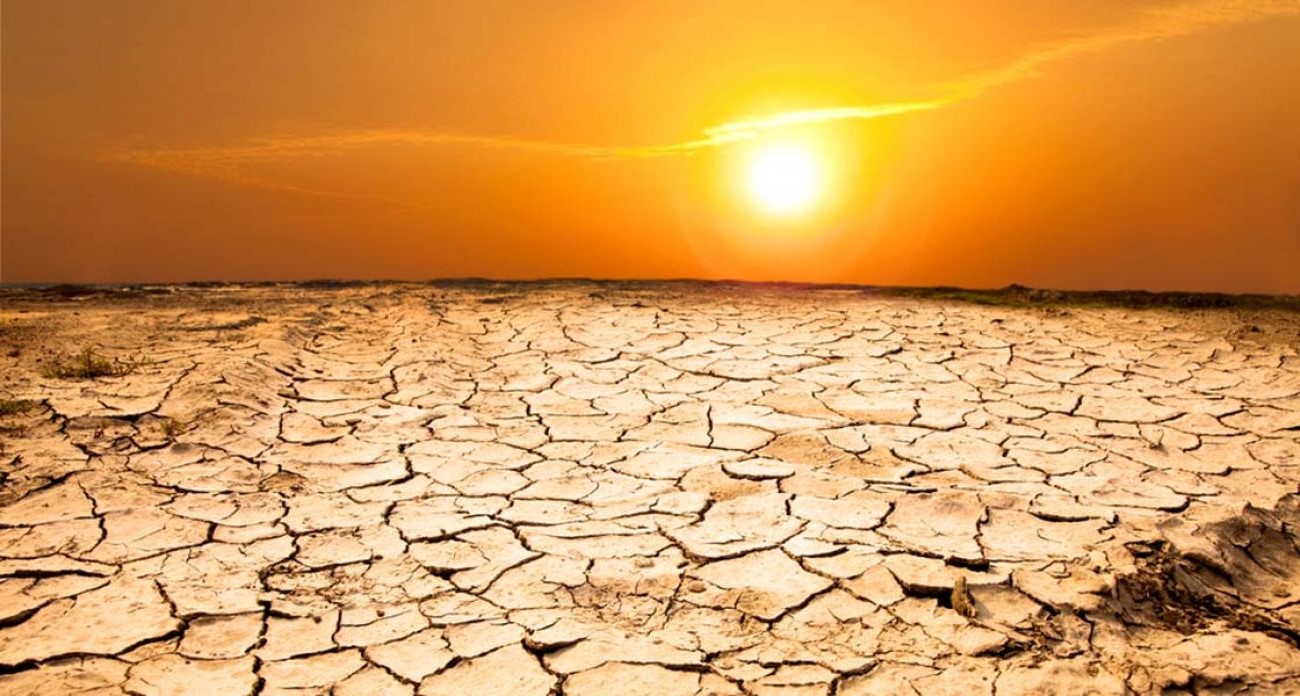Home>Weather and Climate>Rainfall In Dubai: Exploring The Precipitation Patterns In The City


Weather and Climate
Rainfall In Dubai: Exploring The Precipitation Patterns In The City
Published: March 2, 2024
Explore the weather and climate of Dubai through an in-depth analysis of rainfall patterns in the city. Understand the precipitation trends and their impact on the local environment.
(Many of the links in this article redirect to a specific reviewed product. Your purchase of these products through affiliate links helps to generate commission for Temperatures.com, at no extra cost. Learn more)
Table of Contents
Introduction
Rainfall in Dubai is a captivating subject that offers a unique perspective on the city's climate and environmental dynamics. Despite being renowned for its arid desert landscape and scorching temperatures, Dubai experiences occasional rainfall that significantly influences various aspects of life in the city. Understanding the patterns, causes, and implications of rainfall in Dubai is essential for appreciating the city's climate and its impact on the local ecosystem, infrastructure, and residents.
In this article, we will delve into the intriguing realm of rainfall in Dubai, exploring the factors that influence precipitation, historical rainfall patterns, the impact of rainfall on the city, and future projections. By unraveling the complexities of rainfall in this dynamic urban environment, we aim to provide a comprehensive understanding of this natural phenomenon and its significance for Dubai's residents and visitors.
The exploration of rainfall in Dubai offers a compelling narrative that goes beyond the stereotypical image of a perpetually sunny and dry metropolis. It sheds light on the city's resilience in the face of climatic challenges and the diverse adaptations that have emerged to harness the benefits of rainfall while mitigating its potential risks. As we embark on this journey through the realm of precipitation in Dubai, we will uncover the intricate interplay between nature and urbanization, and the ways in which rainfall shapes the city's identity and sustainability.
Join us as we unravel the mysteries of rainfall in Dubai, from its enigmatic origins to its profound impact on the city's landscape and inhabitants. Let's embark on a captivating exploration of this natural phenomenon, delving into the depths of Dubai's climatic tapestry to reveal the hidden influence of rainfall on this vibrant desert oasis.
Factors Affecting Rainfall in Dubai
The rainfall patterns in Dubai are influenced by a myriad of factors that collectively shape the city's climatic conditions. Understanding these factors is crucial for comprehending the dynamics of precipitation in this arid region. Here are the key elements that affect rainfall in Dubai:
-
Geographical Location: Dubai's location within the Arabian Peninsula exposes it to unique atmospheric conditions. Situated on the northern edge of the Arabian Desert, the city experiences the influence of both the desert climate and the proximity to the Arabian Gulf. These geographical features play a significant role in determining the precipitation patterns in the region.
-
Subtropical Climate: Dubai falls within the subtropical arid climate zone, characterized by hot and dry conditions for the majority of the year. The combination of high temperatures and low humidity levels contributes to the limited occurrence of rainfall in the city.
-
Global Wind Patterns: The prevailing wind patterns, such as the Shamal winds from the northwest and the maritime influences from the Arabian Gulf, play a role in shaping the distribution of rainfall in Dubai. These wind systems interact with local atmospheric conditions, influencing the likelihood and intensity of precipitation.
-
Topographical Features: While Dubai is predominantly flat, the Hajar Mountains to the east can influence local weather patterns. The mountains may act as a barrier to incoming weather systems, impacting the amount of rainfall that reaches the city.
-
Urbanization and Heat Island Effect: The rapid urban development and expansion of infrastructure in Dubai have led to the creation of urban heat islands. These areas experience higher temperatures than surrounding rural areas, potentially affecting local weather patterns and cloud formation, which in turn can influence rainfall.
-
Climate Change: The global phenomenon of climate change has the potential to alter rainfall patterns worldwide, including in Dubai. Changes in sea surface temperatures, atmospheric circulation, and other climate variables may have implications for the future of rainfall in the region.
By considering these factors, we gain valuable insights into the intricate web of influences that govern rainfall in Dubai. The interplay of geographical, climatic, and anthropogenic elements creates a complex tapestry of conditions that define the city's precipitation patterns. Understanding these factors is essential for appreciating the nuances of Dubai's climate and the challenges and opportunities presented by its unique position within the global climatic framework.
Historical Rainfall Patterns
The historical rainfall patterns in Dubai offer a fascinating glimpse into the city's climatic evolution and its enduring relationship with precipitation. While Dubai is renowned for its arid climate and limited rainfall, historical records reveal intriguing fluctuations in precipitation levels over the years. These patterns not only reflect the natural variability of the region's climate but also provide valuable insights into the city's resilience in the face of environmental challenges.
Historical data indicates that Dubai experiences minimal annual rainfall, with the majority of precipitation occurring during the winter months. The average annual rainfall in the city ranges from 100 to 150 millimeters, with notable variations from year to year. The sporadic nature of rainfall in Dubai underscores the significance of each precipitation event and its impact on the local environment and society.
Over the past few decades, historical records show a degree of variability in Dubai's rainfall patterns. Periods of above-average rainfall have been interspersed with drier years, reflecting the inherent unpredictability of precipitation in this arid region. These fluctuations are influenced by a combination of local and global factors, including atmospheric circulation patterns, sea surface temperatures, and climatic oscillations such as the El Niño-Southern Oscillation (ENSO).
The historical rainfall patterns also highlight the significance of extreme weather events in shaping Dubai's climate narrative. Intense rainfall events, though infrequent, have the potential to cause significant impacts, including flash floods and disruptions to infrastructure and transportation. These events underscore the need for robust urban planning and water management strategies to mitigate the risks associated with extreme precipitation in a predominantly arid environment.
Furthermore, the historical records of rainfall in Dubai serve as a valuable resource for climate scientists and researchers studying the long-term trends and variability of precipitation in the region. By analyzing historical data, experts can gain a deeper understanding of the complex interactions between local and global climate drivers, providing essential insights into the future trajectory of rainfall patterns in Dubai.
In essence, the historical rainfall patterns in Dubai offer a compelling narrative of resilience, adaptation, and the intricate dance between nature and urbanization. By delving into the annals of precipitation records, we unravel the enigmatic story of rainfall in this desert city, shedding light on its profound implications for the environment, infrastructure, and societal dynamics.
Impact of Rainfall on the City
The impact of rainfall on Dubai extends far beyond the immediate relief it provides from the arid climate. Despite the city's limited annual precipitation, rainfall plays a pivotal role in shaping various aspects of urban life and environmental sustainability. From ecological rejuvenation to infrastructural challenges, the influence of rainfall reverberates throughout the city, leaving a lasting imprint on its landscape and inhabitants.
Ecological Rejuvenation
When rainfall graces the desert city, it breathes new life into the arid terrain, triggering a remarkable transformation. The parched earth eagerly absorbs the precious moisture, giving rise to vibrant bursts of greenery and floral blooms. This rejuvenation not only enhances the aesthetic appeal of the city but also supports local ecosystems, providing sustenance for indigenous flora and fauna. The fleeting yet profound impact of rainfall on Dubai's ecological balance underscores the intrinsic value of precipitation in sustaining the delicate equilibrium of the desert environment.
Water Management and Conservation
In a city where water is a precious commodity, rainfall assumes a critical role in replenishing natural water sources and supplementing the municipal water supply. The capture and utilization of rainwater through innovative conservation measures contribute to the sustainable management of water resources in Dubai. From rooftop harvesting systems to artificial recharge techniques, the city leverages rainfall as a vital resource, reducing reliance on desalinated water and promoting conservation efforts essential for long-term water security.
Infrastructural Resilience
While rainfall brings respite from the arid conditions, it also presents challenges to the city's infrastructure. The sporadic nature of precipitation, coupled with intense rainfall events, can strain drainage systems and lead to localized flooding. Urban planning and engineering solutions are essential to mitigate the impact of rainfall on transportation networks, buildings, and public spaces. The integration of sustainable drainage practices and flood-resilient design principles is crucial for enhancing the city's infrastructural resilience in the face of variable precipitation patterns.
Cultural and Social Dynamics
Rainfall holds cultural significance in Dubai, evoking a sense of wonder and appreciation among residents and visitors. The rare occurrence of rain prompts communal gatherings and outdoor celebrations, fostering a collective appreciation for the ephemeral gift of precipitation. Moreover, the influence of rainfall on leisure activities, such as desert excursions and outdoor events, underscores its role in shaping social dynamics and enriching the cultural tapestry of the city.
Economic Implications
The impact of rainfall extends to economic spheres, particularly in sectors reliant on natural resources and agricultural activities. The rejuvenating effects of rainfall on agricultural lands in the surrounding regions contribute to food security and agricultural productivity. Additionally, the aesthetic allure of a verdant landscape following rainfall enhances the appeal of outdoor tourism and recreational experiences, bolstering the city's tourism industry.
In essence, the impact of rainfall on Dubai transcends the realms of ecology, infrastructure, culture, and economy, weaving a multifaceted tapestry of influences that resonate throughout the city. By recognizing the profound implications of rainfall, Dubai embraces the challenges and opportunities presented by this natural phenomenon, forging a path toward sustainable coexistence with the desert environment.
Read more: Exploring Colorado’s Winter Weather Patterns
Future Projections for Rainfall in Dubai
As the global climate continues to undergo unprecedented changes, the future projections for rainfall in Dubai present a compelling narrative of adaptation and resilience. Climate models and scientific projections offer valuable insights into the potential trajectory of precipitation patterns in the region, shedding light on the challenges and opportunities that lie ahead.
Projections indicate that Dubai may experience alterations in its rainfall patterns due to the complex interplay of climatic factors. While the overall annual precipitation levels may exhibit variability, there is a growing consensus among climate researchers that the frequency and intensity of extreme weather events, including heavy rainfall and thunderstorms, could potentially increase in the future. This trend aligns with global climate projections, which suggest a heightened likelihood of extreme precipitation events in arid and semi-arid regions.
Furthermore, the influence of climate change on sea surface temperatures and atmospheric circulation patterns may contribute to shifts in the distribution and timing of rainfall in Dubai. The potential implications of these changes extend to water resource management, urban planning, and ecological sustainability. As the city grapples with the prospect of evolving rainfall patterns, there arises a pressing need for proactive measures to enhance resilience and adaptability in the face of climatic uncertainties.
In response to the projected changes in rainfall, Dubai is poised to embrace innovative strategies aimed at water conservation, sustainable urban design, and climate-resilient infrastructure. The integration of green infrastructure, such as permeable surfaces and water-sensitive urban design, can mitigate the impacts of intense rainfall events and enhance the city's capacity to manage stormwater effectively. Additionally, advancements in water harvesting technologies and smart irrigation systems offer promising avenues for harnessing the benefits of rainfall while minimizing water scarcity risks.
The future projections for rainfall in Dubai underscore the imperative of holistic climate adaptation and mitigation efforts, emphasizing the interconnectedness of environmental, social, and economic resilience. By leveraging scientific insights and innovative solutions, Dubai endeavors to navigate the complexities of evolving precipitation patterns, fostering a sustainable and adaptable urban landscape amidst a changing climate.
In essence, the future projections for rainfall in Dubai serve as a catalyst for proactive action and forward-thinking initiatives, shaping the city's trajectory toward climate resilience and sustainability. As Dubai embraces the challenges and opportunities presented by future rainfall patterns, it embarks on a transformative journey toward a harmonious coexistence with the dynamic forces of nature.
Conclusion
In conclusion, the exploration of rainfall in Dubai unveils a captivating narrative of resilience, adaptation, and the intricate interplay between nature and urbanization. The factors influencing rainfall in the city, including its geographical location, subtropical climate, global wind patterns, topographical features, urbanization, and the specter of climate change, underscore the complex tapestry of influences that govern precipitation patterns. These elements collectively shape the climatic identity of Dubai, offering valuable insights into the city's unique position within the global climatic framework.
The historical rainfall patterns in Dubai reflect the city's enduring relationship with precipitation, showcasing the inherent variability of the region's climate and the profound impact of extreme weather events. The sporadic yet transformative nature of rainfall rejuvenates the arid landscape, influences water management and conservation efforts, presents infrastructural challenges, and holds cultural, social, and economic implications. The influence of rainfall extends far beyond ecological rejuvenation, permeating various facets of urban life and environmental sustainability.
Looking toward the future, the projections for rainfall in Dubai underscore the need for proactive climate adaptation and mitigation strategies. As the city navigates the potential shifts in precipitation patterns, embracing innovative solutions such as sustainable urban design, green infrastructure, and advanced water management technologies becomes imperative. By leveraging scientific insights and forward-thinking initiatives, Dubai aims to foster a sustainable and adaptable urban landscape amidst a changing climate, positioning itself at the forefront of climate resilience and environmental stewardship.
The exploration of rainfall in Dubai transcends the realms of climatology, offering a profound narrative of coexistence with the dynamic forces of nature. It underscores the city's capacity to adapt, innovate, and thrive in the face of climatic challenges, shaping a trajectory toward a harmonious balance between urban development and environmental sustainability. As Dubai continues to unravel the mysteries of rainfall, it embarks on a transformative journey, embracing the challenges and opportunities presented by this natural phenomenon, and forging a path toward a resilient and sustainable future.













